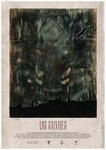Original title: Los salvajes
Country: Argentina
Director: Alejandro Fadel
Script: Alejandro Fadel
Actors: Leonel Arancibia, Roberto Cowal, Sofía Brito, Martín Cotari, César Roldán, Ricardo Soulé
Cinematography: Julián Apezteguia
Edition: Andrés Pepe Estrada, Delfina Castagnino
Music: Sergio Chotsourian
Runtime: 130 minutes
Year: 2012
4 points
Lost in the hills
By Rodrigo Seijas
Five teenagers run away from a internship in the interior of the country, and after the escape they must continue their way through a landscape of hills, in between an absolute desolation. They are armed and carry some food, although they hunt to feed themselves. With an adventurous spirit, but more concerned about the existentialist side of the crossing, and with echoes that connect it with a large part of the history of the national cinema, Alejandro Fadel arrives at the feature film in solitary after his collaboration in Love, first part.
The movie begins with the escape of the five teenagers, in what represents a tense, agile and catchy kick-off. But when it all was served for a genre film about a runaway in a savage landscape, the director choose to inspire himself in a mixture of the works by Lucrecia Martel, Lisandro Alonso and even Leonardo Favio, but undoubtedly without the same narrative skills. In The savages, all leads to an indigestible combination of references to Greek tragedies, religious postulates and magical realism.
The characters of Fadel´s movie never reach own life and are submitted permanently to the designs of a script at least arbitrary. In addition to the fact that of the 130 minutes, there are at least 40 extra, and we have more than enough. Despite that, like other examples of the cinematography of the FUC, the technical items are impeccable, although it is unclear in order to what. A completely wasted opportunity, that forces to think that the fear to the generic is killing certain sectors of the youngest Argentinean cinema.
Editor´s note: this review, with changes, was published during the BAFICI 2012.




